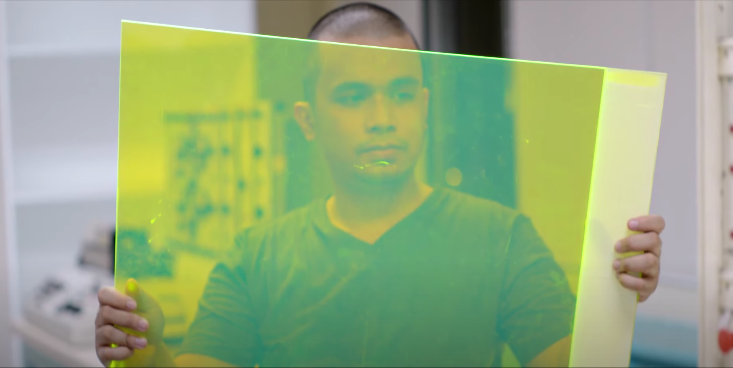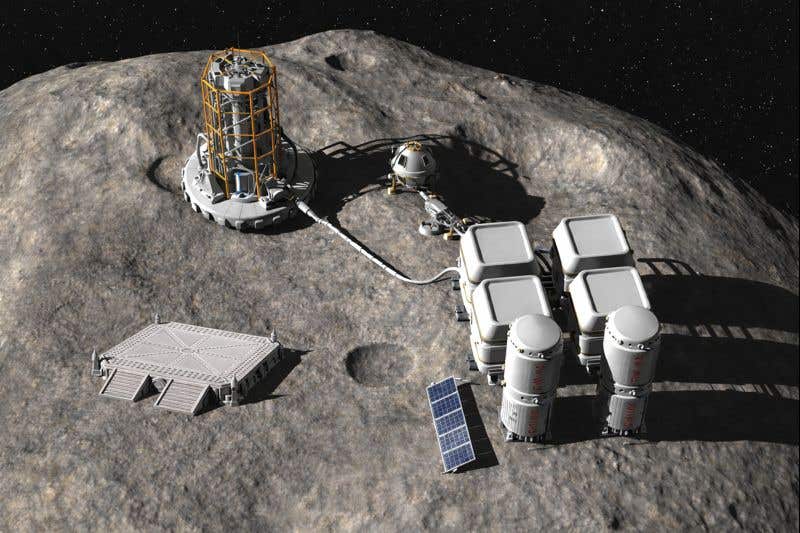Green solar panels made from food waste generate energy without sunlight
These panels can collect ultraviolet light that is not visible to the naked eye and can still penetrate through dense cloud cover.

[Apr. 26, 2023: Staff Writer, The Brighter Side of News]
Carvey Ehren Maigue holding up one of his prototype panels. (CREDIT: James Dyson Foundation)
The design industry is currently embracing sustainability as the next significant trend. Every industry must adopt sustainable practices, and one of the most exciting aspects of this movement is exploring alternative materials. This involves identifying substitutes and making adjustments to optimize resource usage for the benefit of the environment.
According to the International Energy Agency, fossil fuels still account for over 81% of global energy production. If we continue to consume these resources at the current rate, the world's oil and gas reserves will be depleted by 2060.
The use of solar panels is pivotal in the pursuit of clean energy. However, their efficiency takes a significant hit when clouds cover the sun.
Fortunately, a new variant of solar panels has been created by an electrical engineering student from Mapua University. These panels can collect ultraviolet light that is not visible to the naked eye and can still penetrate through dense cloud cover, thus addressing the productivity issue.
Related Stories
Carvey Ehren Maigue, the winner of the James Dyson Sustainability Award, has designed a creation called AuREUS (short for Aurora Renewable Energy and UV Sequestration) with the aim of turning the walls and windows of large buildings into perpetual sources of energy. The innovative concept makes use of luminescent particles derived from fruit and vegetable waste that can absorb UV light and convert it into visible light. The visible light is then converted into energy using a solar film.
Solar panels that don't rely on visible sunlight
The AuREUS concept eliminates the need for visible sunlight to generate energy, which is a unique characteristic of the technology. If it proves to be a success, it will pave the way for new sustainable energy sources that can be used in various settings.
"It’s similar to how we breathe in oxygen and we exhale carbon dioxide," Maigue said. "It takes in ultraviolet light, and then after some time it would shed it as visible light."
Maigue's AuREUS prototype is a lime green panel measuring 3-by-2 feet, which he installed in his apartment window. During his presentation for the James Dyson Award, he demonstrated that the panel could generate sufficient electricity to charge two phones per day. Maigue believes that if these panels were scaled up, they could produce enough energy to power entire buildings independently.
Democratizing renewable energy
The material's versatility is also emphasized by its creator. The resin can be applied to fabrics for clothing, enabling designers to integrate the panels into a variety of innovative designs. This feature could help people better understand and accept renewable energy solutions.
"If we can democratize renewable energy, we can bring it both physically closer to people as well as psychologically closer," Maigue explained. "It would give them a sense of access to it, that they are closer to it, that they don’t have to be large institutions that have the capability to harvest solar energy with their rooftops."
Not only will these panels help to reduce costs and mitigate the impacts of climate change, they will also support local agricultural communities and contribute to reducing people's exposure to radiation-induced illnesses. Additionally, the use of sustainable architecture with these panels can assist in reducing urban carbon footprints.
Maigue's invention is both future-looking and problem-solving for the present. “I want to create a better form of renewable energy that uses the world’s natural resources, is close to people’s lives, forging achievable paths and rallying towards a sustainable and regenerative future,” says Maigue.
Maigue's upcoming plan involves creating his initial building installation using AuREUS technology. The installation will be set up at a small medical clinic situated on the island of Jomalig, which is located off the coast of the Philippine mainland. This clinic often experiences power outages during storms, making the installation of the AuREUS technology particularly useful.
For more information on AuREUS take a look at the James Dyson Foundation video above.
For more environmental news stories check out our Green Impact section at The Brighter Side of News.
Note: Materials provided above by The Brighter Side of News. Content may be edited for style and length.
Like these kind of feel good stories? Get the Brighter Side of News' newsletter.



